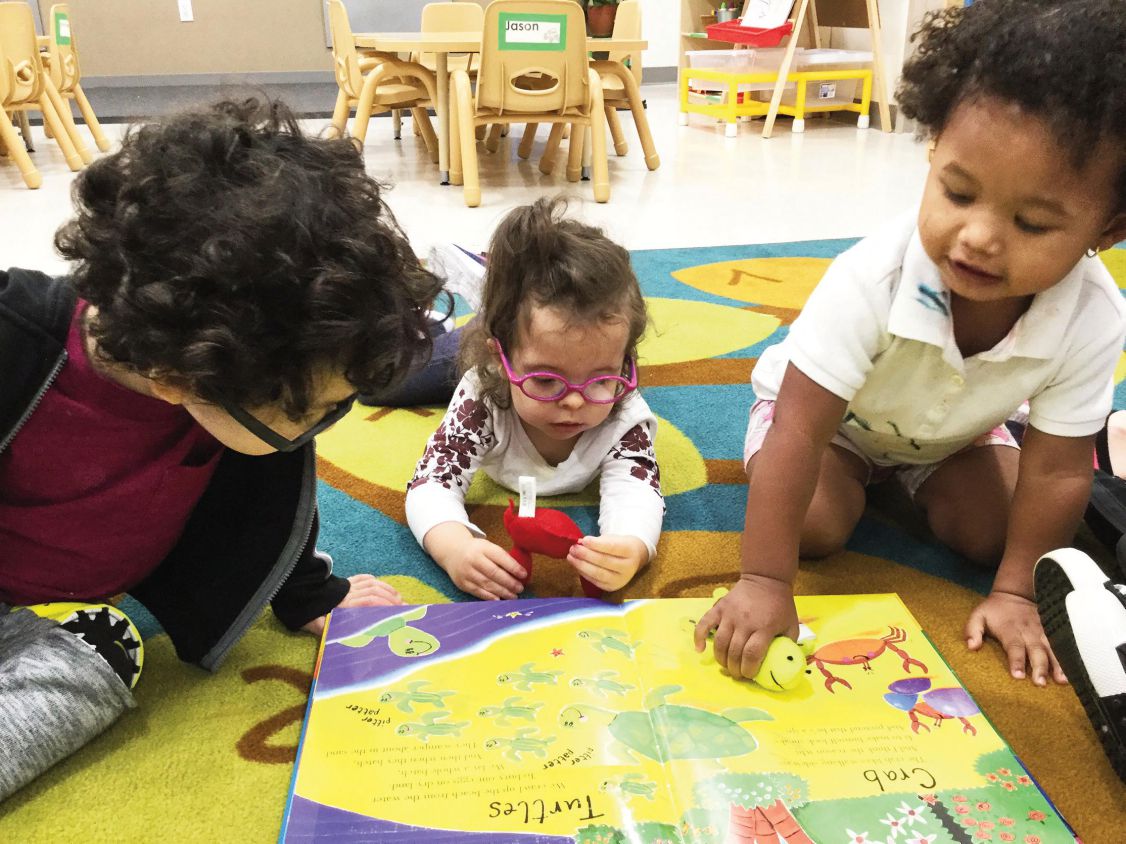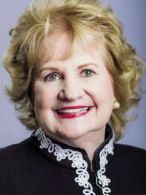
BETTER TOGETHER: (Above) Two visually impaired students and one sighted student from Miami Lighthouse Academy Pre-K learn about crabs and turtles using toys and an educational book; (Opposite page) Inclusive learning session at Miami Lighthouse Academy using tactile objects — in this case, apples.
caption) for print magnification, and playing all together while hunting for beeping easter eggs. Inclusive classrooms can teach students in practical ways that differences are natural.
EXPECTATIONS ARE HIGH – FOR EVERYONE
In inclusive learning environments, students of all backgrounds and abilities can feel equally valued, which makes learning easier. With full immersion, they learn critical thinking and problem-solving skills.
AN EXAMPLE OF AN INCLUSIVE ENVIRONMENT
Seven years ago, we opened the Miami Lighthouse Academy, an inclusive learning environment for early learners ages one through four, with and without vision impairments, to ensure that children thrive together and form lasting connections and friendships. At the Miami Lighthouse Academy, blind and sighted children become fast friends – and that's how it should be. Sighted children of that age don't think to say, "that's my blind friend," they simply call them their friend.
Utilizing the world-renowned HighScope Curriculum for all classroom learners in a learning environment of students with and
without a vision disability, was a first. Each classroom teacher was supported by a teacher of the visually impaired. This enabled students with a vision disability to be supported in a print/braille-rich learning environment, so they could use the same curriculum as sighted peers. We were confident that this approach would benefit every student – blind and sighted alike – and we were right. In fact, a study from the University of Miami indicates that our classes are above national averages in the areas of emotional support, classroom organization, and instructional support for both our toddlers and Pre-K programs. When our visually impaired students graduate from our second grade, they more easily adapt to mainstream public schools. •
ABOUT THE AUTHOR:

Virginia A. Jacko is the Founding President and CEO of the Miami Lighthouse for the Blind, where she provides equitable access to education, blindness prevention programs, and vision rehabilitation training to nearly 25,000 people annually, from blind babies to low vision seniors and their families.